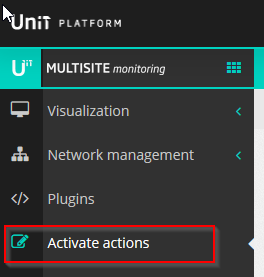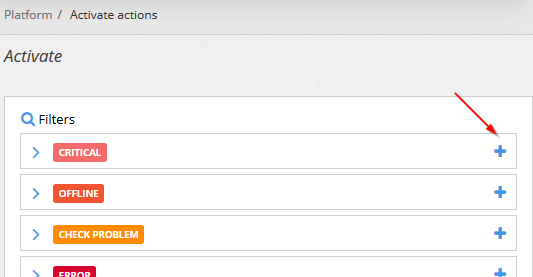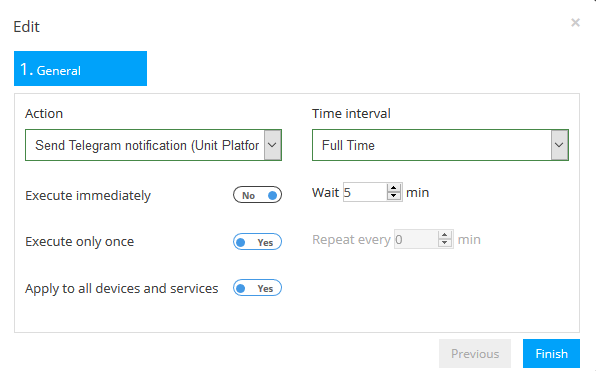If you haven’t configured Telegram yet, read this post first!
After configuring Telegram, you need to activate an action to send the notifications. Go to Multisite Monitoring and click on Activate actions:

Activate actions menu
Choose a status that you want to be notified about. For this example, we will configure notifications for cases where a service changes its status to CRITICAL. Click the add button on the right side:

Add action

Activate action
In this popup, select:
- Action: Send Telegram notification.
- Time interval: Full time.
- Execute immediately: if you want to receive the messages immediately, choose “yes”. If not, you should specify the time, in minutes, that the system will wait before sending the messages (recommended: 5 minutes).
- Execute only once: this option allows to configure recurrences. By choosing “no”, the system will resend the messages at the specified interval. Recommended: “yes” (send only once).
- Apply to all devices and services: when choosing “yes”, notifications will be sent for all devices and services. If you need to enable a notification for specific devices and/or services, choose “no” and select the specific items in the tabs “Devices” and “Services”.
Click Finish to enable the action.
Usage cases
This system has the ability to cover the following usage examples:
- Send a message if a service is in ERROR status for more than 10 minutes.
- Send a message every 30 minutes if a service goes into CRITICAL and remains in this status.
- Send a message if a service is in CRITICAL status for 20 minutes. If the service continues in this status, repeat the message every 5 minutes.
- Send a message immediately after a service goes int CRITICAL status. If the service continues in this status, repeat message every 15 minutes.
Recommendations
- Avoid creating various rules for the same status and same devices and/or services with similar objectives. This can increase the volume of notifications, because every rule is processed independently from each other.
- For services that change status too frequently: choose “no” in the option “Execute immediately”, and specify a time delay, example: 5 minutes. This will make the system wait and send the messages only if the service remains in a problem status for the time specified.
- Configure recurrences only for specific services, otherwise the amount of messages sent will increase significantly.